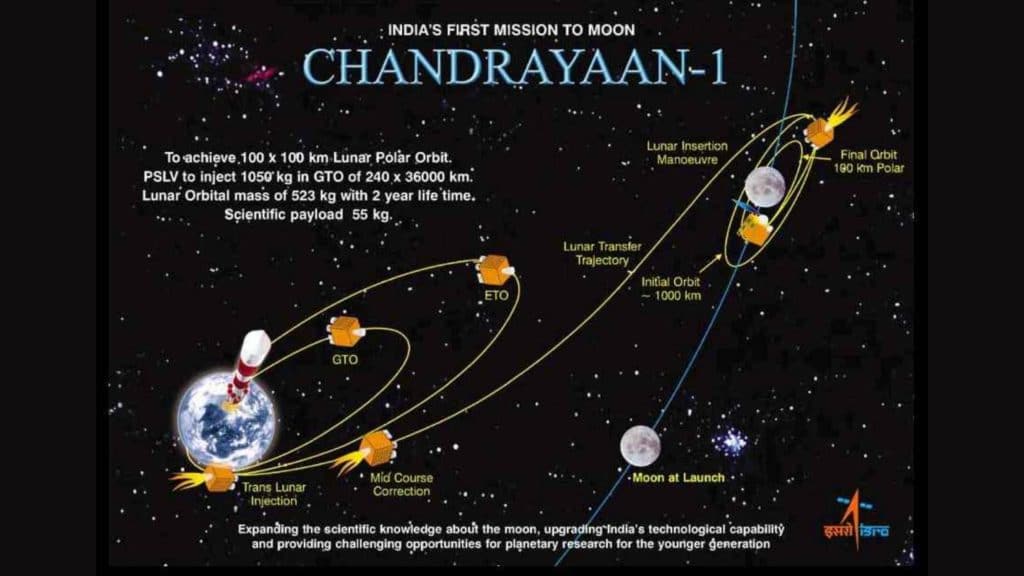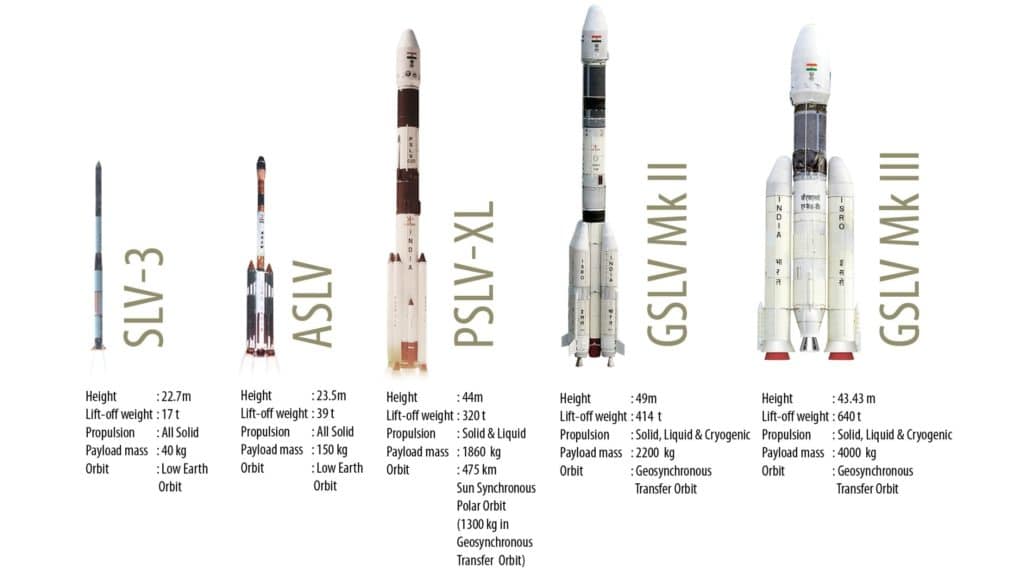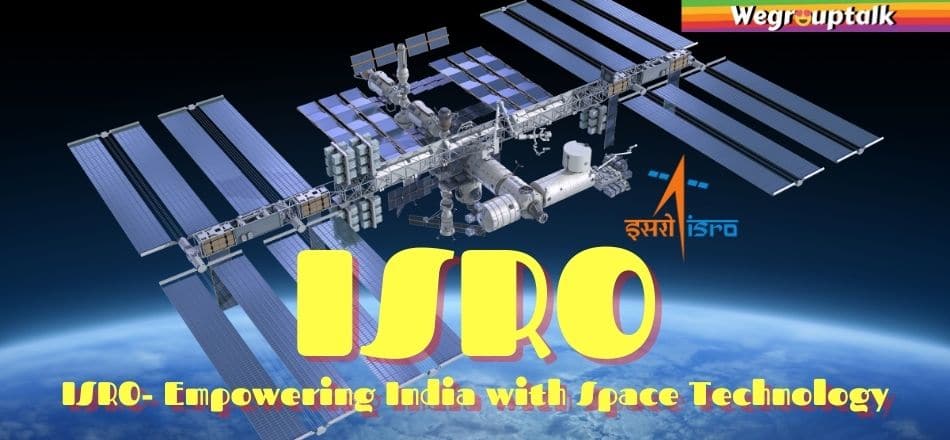Before we begin, let’s talk about the history of the Indian Space Research Organisation, what it stands for and what it aims to do! ISRO, i.e., the Indian Space Research Organization, an independent agency of the Indian Government headquartered in Bangalore, was established to research and develop vehicles and space exploration activities.
ISRO: A BRIEF INTRODUCTION
The Father of the Indian Space program, Dr. Vikram Sarabhai, had strong beliefs that space technology could prove to be such a powerful tool. That could significantly help resolve an ordinary person’s problem and be used in national development. With this vision in mind, ISRO (and due to this achieved self-reliance) significantly focused on building and launching communication satellites to ease the commoner’s life.
The area of space research increased government support by 1950 by establishing the Department of Atomic energy with Homi Bhabha. This department started funding space research across the country.
Indian Space Research Organisation was created (in its modern form as we now know it today) in 1969 by Dr. Vikram Sarabhai, and he was the first chairman of the Indian Space Research Organisation. Currently, ISRO’s chairman is Dr. K.Radhakrishnan.
Indian Space Research Organisation’s objective is space exploration, space research to develop space technology, and its application to serve various national tasks. Its primary motive has always been to serve its people, to achieve self-reliance.
Let’s shift our conversation to the projects launched by ISRO and their purpose and how it has contributed to our Nation’s development.
PROJECTS BY ISRO
Indian Space Research Organisation’s first satellite -Aryabhata, was launched by the Soviet Union in 1975, and a variety of operations were conducted. As of now, ISRO operates a large number of earth observation satellites.
Over the years, a variety of operations were conducted by the Indian Space Research Organisation, beginning with Aryabhata- ISRO’s first satellite, which the Soviet Union launched in 1975. The first satellite placed in orbit was established in 1980 by an Indian-made launch vehicle named Rohini. As of now, ISRO operates a large number of earth observation satellites. Namely INSAT, IRS series, GSAT series, Kalpana-1, YOUTHSAT, RESOURCESAT-2, ANUSAT, STUDSAT, and many more.
How could these satellites possibly contribute to national development?
Let’s find out through various examples as we go through the purposes of satellites that were launched.
- INSAT-2 satellites present telephone entrance in remote areas, data transmission assistance to organizations. National Stock exchange, broadcast satellite service, and mobile satellite service to private operators contributing to boosting the economy.
- EDUSAT is centered on adult literacy and length learning employment in rural India. This has helped various students in rural areas get access to educational content.
- IRS satellites are utilized for environment monitoring, investigating soil erosion, forestry administration, drought monitoring, fisheries monitoring, etc. That enables farmers, fishers,i.e.common people to benefit from their analysis.
- ISRO has employed its technology in telemedicine too.
ISRO has always pushed towards self-reliance, even though the Soviet Union launched the first satellite. Harnessing space technology for societal development while seeking self-reliance is deeply integrated into ISRO’s vision.
It has gracefully established itself in just a few decades and gained tremendous support and recognition, which many countries could not. Even specific projects launched by ISRO in the pipeline will also empower India tremendously.
UPCOMING PROJECTS
Let’s look at some of the current upcoming projects of ISRO and what they aim to do.
- RISAT-1A: It is a radar-imaging satellite. It is a land-based mission with primary application in terrain mapping and analysis of land, ocean, and water surface for soil moisture 2020.
- Aditya-L1: Aditya L-1 is the first Indian solar coronagraph spacecraft mission to study solar corona in visible and IR bands. The launch of Aditya-L1 is expected by the beginning of 2022.
- NISAR: NASA-ISRO Synthetic Aperture Radar is a joint project of NASA and ISRO aimed at co-developing and launching a dual-frequency synthetic aperture radar satellite that will be used for remote-sensing. It will be the most excellent dual-band detector imaging satellite and is expected to be found in 2022.
- Shukrayaan-1: Indian Venusian orbiter mission is a planned orbiter for Venus that will be used to study the atmosphere of Venus and is expected to launch by 2023.
We could talk about how many projects we could, and the list wouldn’t end. Still, the only thing that’s clear as we notice is that ISRO doesn’t just have a vision of self-reliance; with every program, it is steadily on its way to achieving it with every project.
Empowering common man through Space Technology
To understand how ISRO has made life easier for the commoner, we need to know how space technology has helped people throughout the decades. The beautiful selfies we take through megapixel cameras were initially designed for space photography and slowly made their way into everyday life use! The MRI, which has helped save so many lives, was designed for observing the moon.
Velcro was intended to bind equipment in zero gravity solutions, now popularly used in bags, shoes, and purses. More than 1600 technologies have revolutionized the lives of the commoner. It’s important to remember that an existing technology application can come to a significant innovation that offers cost and better efficiency that have not been seen earlier.
ISRO: EMPOWERING INDIA
In similar ways, innovations are made for new missions that ISRO launches. Now let’s talk about the effects of ISRO on our Nation’s development and how it has impacted us.
Indian National Coastal Information System (INCOS) identifies rich fish regions through bulletins on Prospective Fishing Zones, thereby benefiting fishers. ISRO’s telemedicine program, which was started in 2001, has helped people who live in areas (including rural areas and Siachen) under-served by medical infrastructure.
ISRO’s remote sensing satellite data on monsoon prospects and water availability have profited farmers as they can make appropriate agro-related decisions. Remote sensing has also allowed us to assess air-water pollution, characterize biodiversity, map of forests and biomass, i.e., in simple words, to closely monitor and analyze our country’s forests.
ISRO’s Tele-education networks facilitate TV broadcast, video conferencing, and web-based instruction has helped students of rural areas in the academic aspect of their lives. ISRO’s space tech has benefitted ATM and stock market operations.
Ocean biota plays a crucial role in maintaining energy balance on earth. To observe oceans, ISRO has dedicated three satellites Oceansat-2, SARAL, and SCATSAT-1. These satellites provide:
- Data that is used to generate information on Photosynthetically total suspended sediments.
- Suspended sediment concentration.
- Ocean surface winds.
- Ocean altimetry.
- Ocean state forecast.
As we all must be aware, India is prone to various natural disasters like floods, earthquakes, drought, landslides, cyclones, etc. It’s essential to keep track of the factors that could indicate the occurrence of such disasters.

ISRO’s satellites regularly provide synoptic observation of natural disasters. An analysis can be made to better plan and manage disasters. Satellite communication and navigation systems play a crucial role in disaster management. These space inputs are analyzed, and through Disaster Management Support (DMS) Programme, various aspects of natural disasters are keenly addressed.
Increasing population, urban sprawl, etc., are prevalent problems for the urban environment and need to be discussed consistently by evolving policies. These can be managed and planned for a constructive expansion of the urban environment with high-resolution satellite data, which acts as a tool. It analyses and keeps track of the dynamics of the land.
We can easily say that because of ISRO, even the remotest regions of India are connected through satellite technology which has provided the fruits of education, communication, television, and telemedicine. Remote sensing has helped in boosting the economy.
The experiments on biomedicine give a better understanding of human systems’ behavior like the cardiovascular and vestibular when subjected to zero gravity. Research like that on biomedicines can lead to innovations in medicines( as we saw for Velcro). Analysis of natural disasters has kept the country disaster-ready; analysis and mapping of terrain, soil, water bodies have helped the agriculture industry and travelers.
LATEST BUZZ
So what’s the latest buzz around ISRO’s upcoming project?
As stated by DOS Secretary and ISRO chairman, Dr.K.Sivan, ISRO intends to collaborate with researchers, MSME’s and start-ups and is looking forward to finding them and provide them institutional space. This is a massive deal since no formal mechanism was available to share technical systems with the private sector.
Still, with this decision, private companies too can make their mark in the space sector. As an initiative, ISRO has established incubator centers and space technology centers across the Nation. This has provided entrepreneurs and private partnerships a platform and built robust networks with various institutes through the transfer of technology or through supplying crucial systems in the programs. This has helped develop sound infrastructure, a capable and reliable ecosystem.
The Start-up Support program’s main objective will be to make India a space hub to promote self-reliance, self-resilience. The areas ISRO will primarily focus on are Robotics, AM, Green Propellants, drones, satellites, etc. This will be a huge step towards progress and development as more people would have access to the space sector.

SUMMARY
Ever since ISRO was established, it has consistently been on its way to achieving self-reliance, being served to the ordinary person, and serving the Nation. In rightly doing so, it has become one of the six largest space agencies in the world. ISRO has consistently maintained communication satellites INSAT and remote sensing IRS satellites.
These resolve the ever-growing demand for fast and reliable communication and earth observation, respectively. Broadcasts, communications, disaster management tools, telemedicine, distance education satellites; are all developed by ISRO that contribute significantly to the Nation’s development.
The Polar Satellite Launch Vehicle was launched by ISRO and has become a favoured carrier for satellites because of its reliability and cost-efficiency. Cost-efficient and reliable launch systems are essential to developing as they are a step towards achieving complete self-reliance.
Apart from the technological aspects of ISRO’s space research and exploration, ISRO has also contributed to science and science education. That has encouraged students’ steady and consistent progress. Various dedicated research centres and autonomous institutions for remote sensing, astronomy and astrophysics, atmospheric sciences, and space sciences in general function under the Department of Space’s aegis, giving students, researchers a lot of opportunities encourages them to progress.
ISRO’s own Lunar and interplanetary missions and other scientific projects that are regularly planned and developed promote and support science education, aside from providing relevant data to the scientific area, which nourishes science in return.
It’s safe to say that most of the technology we’re surrounded by, ISRO had a hand in developing it in some way or another. ISRO has empowered India through its tremendous hard work and determination. It empowers us to research, explore, innovate, and uphold its vision of being of service to the Nation, of achieving self-reliance.
ALSO, READ- How Space Junk is making space a dunk-yard??
Follow us on FACEBOOK, INSTAGRAM, and TWITTER to stay connected.




